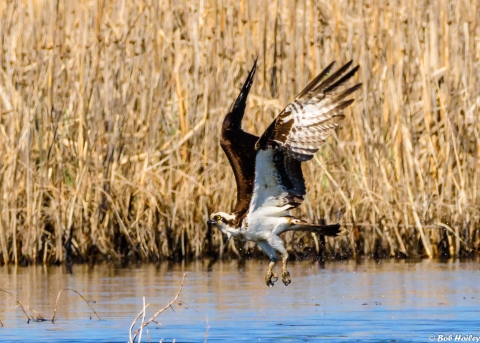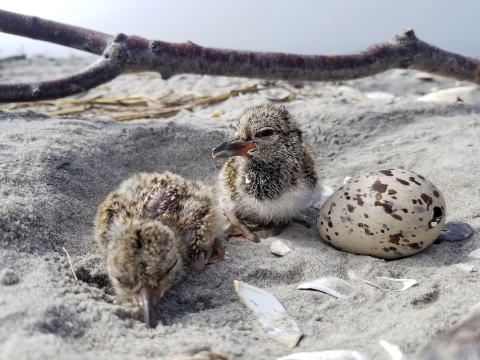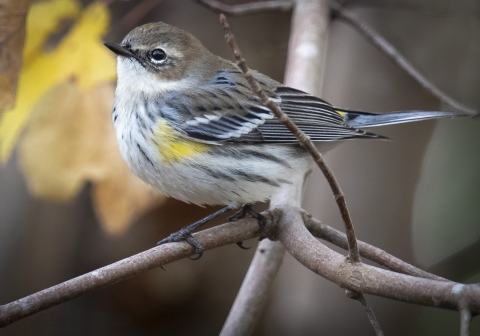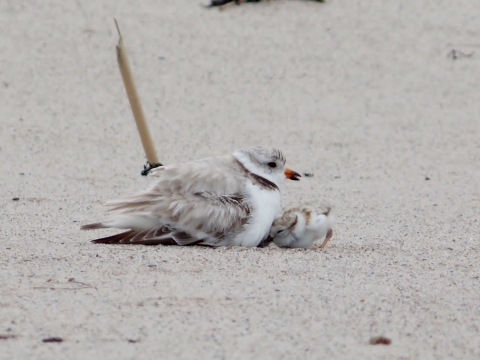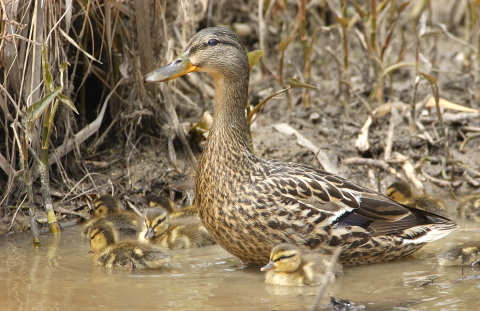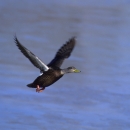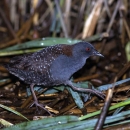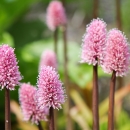Seasons of Wildlife
Take a walk on the many trails: Look carefully for white-tailed deer, wild turkeys, and squirrels. Near the fresh water habitats watch for muskrats and otters. Mink can often be spotted as they forage for their next meal.
Winter:
December through February is an exciting time at the refuge. Hundreds and often thousands of black ducks and Atlantic brant call Forsythe their winter home. Bald eagles, short-eared owls, buffleheads, common goldeneyes, horned grebes, and red-breasted mergansers are also among the cold weather sights. Diving waterfowl are active in the back bays. Wintering songbirds are often sighted along the refuge's many hiking trails. Drive and hike with care as snow and icy patches are often on the roads and trails.
Spring:
March, April, and May all see the marsh grasses begin to change from winter’s brown to the green of warmer times. Peepers mating calls in are heard in freshwater habitats; the raucous sounds of the laughing gulls fill the air. Ospreys return from their “winter vacation” in the south and take up residence in the same nest. Osprey Outlook on the refuge boardwalk, complete with telescopes and interpretive panel, provides for outside viewing of an osprey nest. An “osprey cam” provides live views of the nest activity on a monitor in the visitor information center. Meanwhile, beach nesting birds arrive as the annual spring migration begins. Our purple martins return to their nests between the visitor information center and the headquarters building. The colony, which nests in the many gourds hanging from poles, is visible from the parking lot and as you enter the wildlife drive. Watch out for diamondback terrapins, which can be seen bobbing up and down in the creeks. Look for females coming ashore to lay their eggs in the sandy soil. Be careful not to run over them!
Summer:
June, July, and August is the time when our feathered families are raised and fledged. Turtles are out and about and can often be sunning themselves in the freshwater ponds. Eastern kingbirds perch on tall flower stems or branches, ready to take flight for an insect meal. Great blue herons, great egrets, and snowy egrets abound. In July, southbound shorebird migration begins. August gives us tree swallows congregating prior to migration. The wax myrtle’s gray berries abound, Staghorn sumac displays a reddish-brown seed, and butterflies feed on the flower nectar. Fiddler crabs scamper about during low tide; you can get a great view of them from the boardwalk. Look around when you are near a water control outfall pipe. (There are guardrails at these locations). Striped bass vie with cormorants for baitfish such as Atlantic silversides and mummichogs. These areas are like an aisle in a supermarket and provide the food that other birds and fish need.
Fall:
September, October, and November treat us to a variety of birds, butterflies, and colorful plant displays. Leaves change from green to a kaleidoscope of colors until they drop to the ground, leaving bare branches prepared for the approaching winter. Monarch butterflies migrate through the refuge and the land begins to prepare for winter. Soon, ponds will have fringes of ice on their edges. Ducks and geese begin making their way south to Forsythe - their winter home.
Featured Species
Piping Plover
The piping plover (Charadrius melodus) is a small shorebird that nests on sandy beaches. Beginning in the early 1950’s, plovers began experiencing loss of habitat due to development on the barrier islands. Piping plovers nest on the Holgate and Little Beach Island sections of the refuge. About one-third of the nesting population of piping plover found in New Jersey nest here. The Atlantic coast population of nesting piping plovers extends from Canada to North Carolina. The piping plover was officially listed on January 10, 1986 as ‘threatened’ under the Endangered Species Act of 1973.
American Black Duck
The American black duck (Anas rubripes) is a dabbling duck that spends winter on the shores of the East Coast. Forty-five percent of the total population of American black ducks winter in New Jersey; many of whom use Forsythe. American black ducks can be seen from the Wildlife Drive in large numbers in the winter months.
Atlantic Brant
Atlantic brant (Branta bernicla) are solely dependent on marine plants for food. Prior to the 1930s their diet consisted entirely of eelgrass. A mold attacked and killed eelgrass which caused a rapid drop in the brant population. This refuge was the last stronghold for the brant, and is part of the reason Forsythe NWR was founded. Fifty-seven percent of the Atlantic brant population winters in New Jersey.



